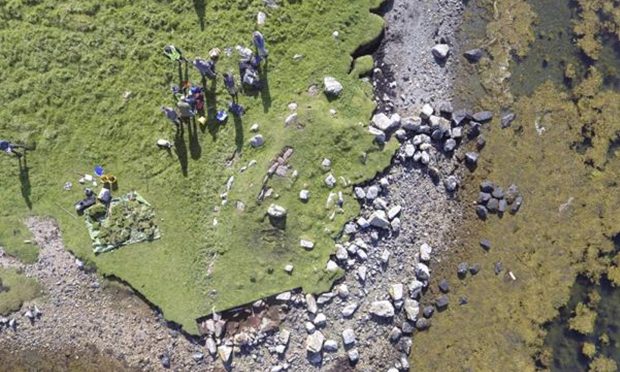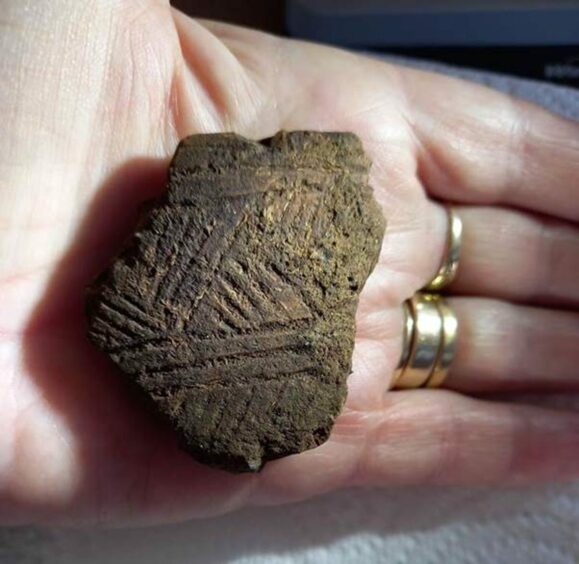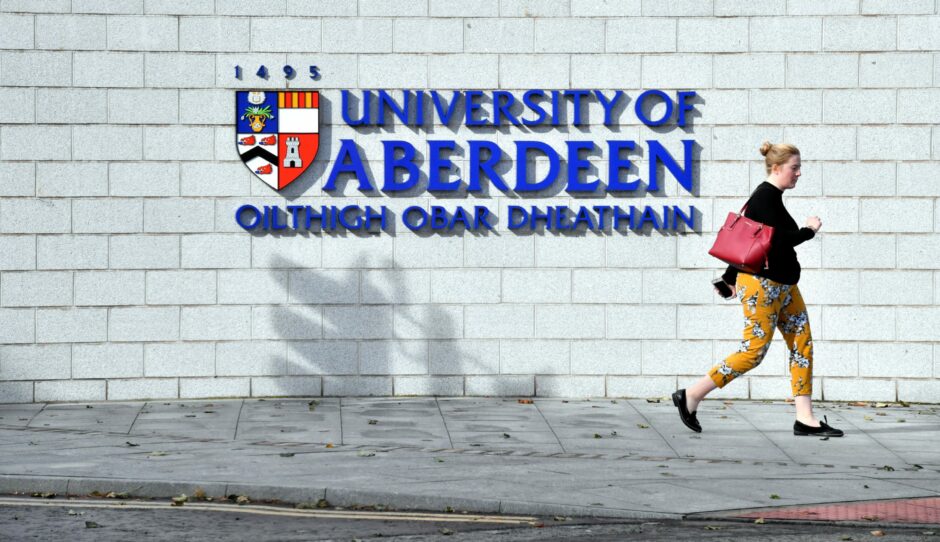Archaeology Shetland has found 6,000 years worth of archaeology in the isles, but one hotspot in particular faces going underwater.
Several sites in the islands show evidence dating back to around 2500BC to 1900AD with fascinating artefacts.
A drone survey of Whalsies Ayre in Burra revealed an extensive prehistoric landscape.
However, it also demonstrated the threat of erosion to the site, with one 4,000-year-old Haa house already half-submerged by rising seas.
While volunteers were keen to record the eroding coast edge to show the impact of climate change, they came across pottery dating to the Neolithic or early Bronze Age.
This included a sherd of Shetland beaker dated to over 4,150 years old, which was hanging off the crumbling coast edge and could have been lost to the next high tide.
‘Real-time damage’
Stephen Jennings, from Archaeology Shetland, is keen to save such archeology and highlight how quickly things are changing.
He said: “We can see the real-time damage rising sea levels are causing.
“The Archaeology Shetland member who reported the stone box at Gossabrough Beach had spent a lot of time there in his youth as his grandparents had a croft on Yell.
“He occasionally returned to walk the sites he so fondly remembered and earlier this year noticed the feature eroding from the banks on the beach.
“In the span of a few months from discovery until we visited it had already begun to collapse.
“A few months more and it would likely have passed unnoticed. This is how quickly things are changing.”
‘Keep an eye on sites before its washed away’
Ellie Graham, a PhD student at Aberdeen University who is researching climate change, expressed the importance of being watchful over historic sites in the isles.
She said: “Shetland has a rich heritage of archaeological sites around its coasts, from prehistoric settlements that were originally much further from the sea, to much more recent maritime features which were specifically constructed here for coastal industries.
“They are all now increasingly threatened by accelerated erosion driven by climate change.
“It’s more important than ever to keep an eye on known sites and for new exposures, so we can rescue valuable archaeological information before its washed away by the sea.”
Adam Civico, head of content marketing for Promote Shetland, believes these findings prove how rich Shetland is in archeology and history.
He explained: “Shetland boasts exceptional archaeology and heritage.
“This includes world-renowned sites like Jarlshof and Mousa Broch, as well as unknown gems like those discovered by Ellie Graham and Archaeology Shetland volunteers, which have been documented and preserved before they were swept away by the waves.
“This project demonstrates that Shetland’s thousands of years of human history are still tangible.”
‘Valuable information about past sea level’
Joanna Hambly, from the Scape Trust (Scotland’s Coastal Archaeology and the Problem of Erosion) praised the research done in Burra.
“It is wonderful to see new research at Whalsies Ayre, one of Shetland’s highest priority coastal sites at risk and to have results suggesting it could be a Neolithic house is very exciting and provides valuable information about past sea level change.
“Current and future sea level rise in Shetland will put Whalsies Ayre and many other similar sites in increasing peril.
“It has never been more important to keep an eye on them and take action to rescue the valuable information about our past they contain,” she added.



Conversation